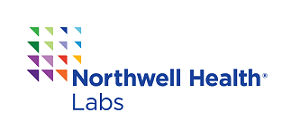Synonyms
|
Phenytoin Free
|
Allscripts (AEHR) Order Name
|
Phenytoin Level, Free
|
Sunrise Clinical Manager (SCM) Order Name
|
Phenytoin Level, Free
|
Clinical Info
|
Therapeutic Drug monitoring
|
Specimen Type
|
Blood
|
Container
|
Red Top Tube
|
Collection Instructions
|
Container/Tube: Plain, red-top tube(s)
Specimen: 2.5 mL of serum (1.0 mL min)
Transport Temperature: Refrigerate
Stability: 4 Days Room temperature,
7 Days Refrigerated
30 Days Frozen
Rejection: Gel-barrier tube; hemolysis; lipemia
Collect as a trough just prior to next dose. For patients receiving fosphenytoin therapy, collect as peak (at least 2 hours after IV infusion or at least 4 hours after IM injection).
|
Transport Instructions
|
Refrigerate
|
Specimen Stability
|
4 Days Room temperature,
7 Days Refrigerated
30 Days Frozen
Rejection: Gel-barrier tube; hemolysis; lipemia
Collect as a trough just prior to next dose. For patients receiving fosphenytoin therapy, collect as peak (at least 2 hours after IV infusio
|
Methodology
|
Ultrafiltration • Immunoassay (IA)
|
Days Performed
|
TAT: 1-2 Days
|
Performing Laboratory
|
Quest Diagnostics Nichols Institute
|
CPT
|
80186
LOINC Code: 3969-3
|
PDM
|
5902380
|
Result Interpretation
Therapeutic: 1.0-2.0 ug/mL
Phenytoin is used singly or in combination with other
anticonvulsants to treat grand mal epilepsy. Monitoring the serum
levels of antiepileptic drugs has increased the efficiency and
safety of drug therapy in epilepsy. It facilitates
individualization of dosage regimen, reveals irregular drug intake
and identifies the responsible agent in intoxicated patients on
multiple drug therapy. Free phenytoin is especially useful in
patients with altered phenytoin binding to protein, e.g., uremia or
individuals having abnormally low levels of albumin, such as
nephrotic syndrome. Free phenytoin in serum correlates better with
the various other free compartments of the body than does the total
drug and is probably a better estimate of the "active drug level"
at the receptor site and agrees more with the clinical
response.
|
Forms
|
|

